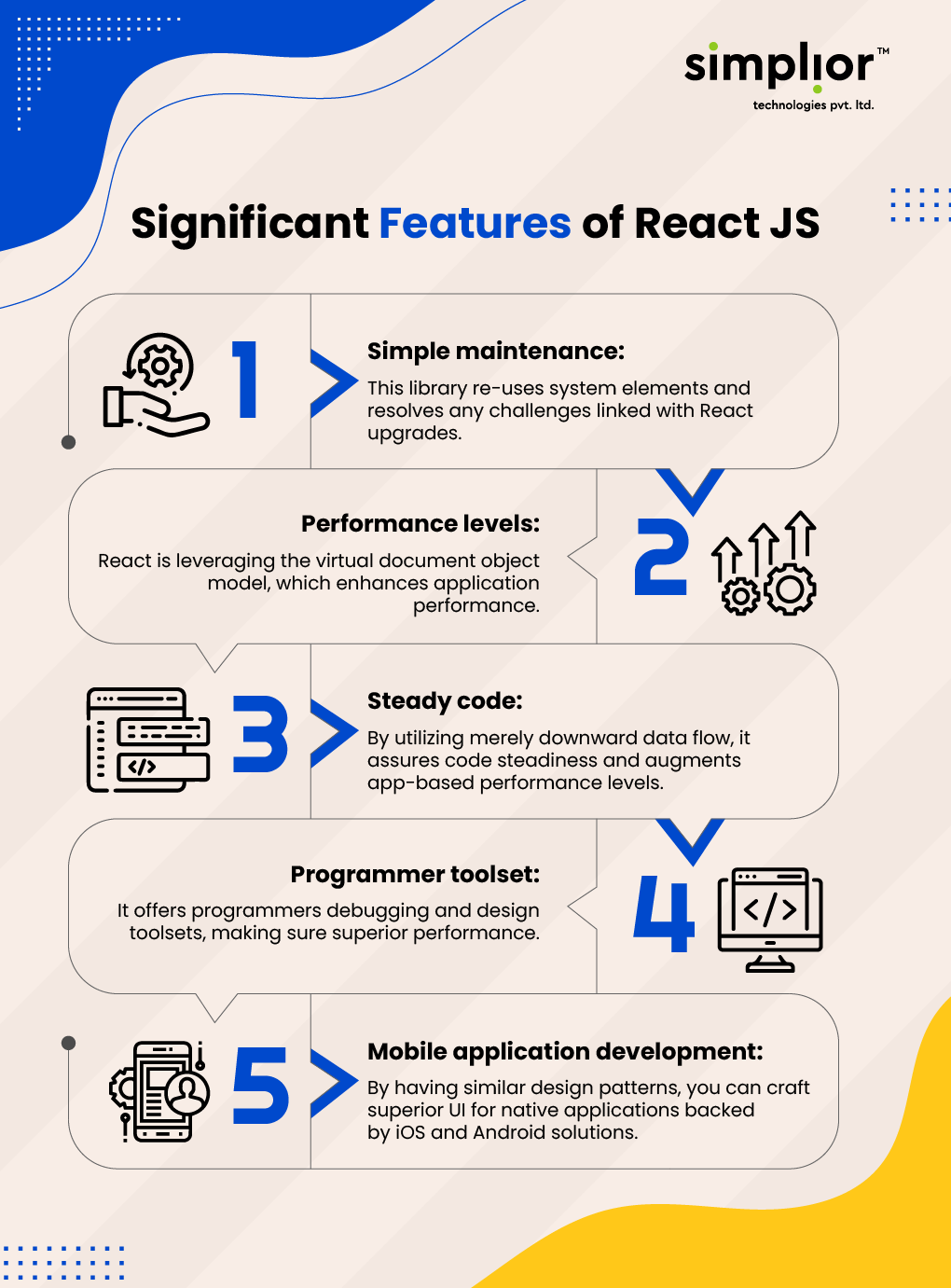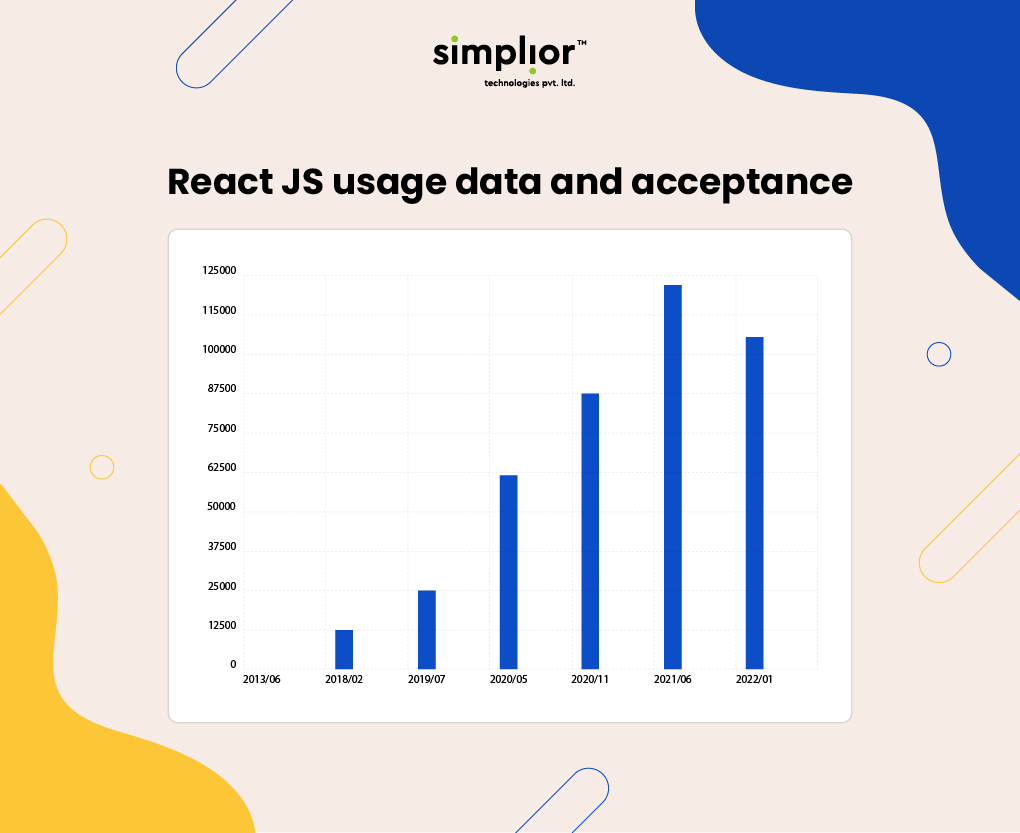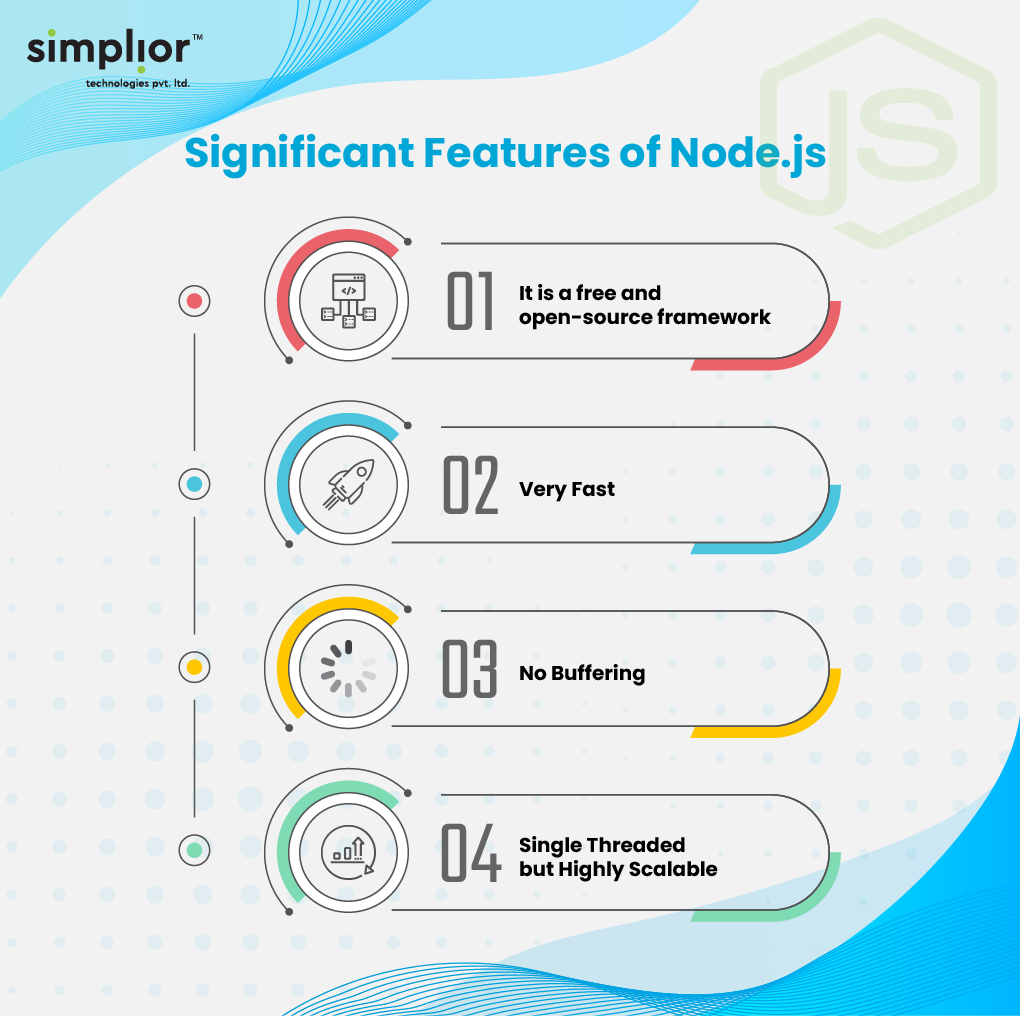JavaScript is a prevalent language, with many frameworks to select from for your projects. Node.js and React JS are two of the most widespread selections of JavaScript frameworks, but developers sometimes face challenges knowing which one is better for their specific projects.
The main difference is that Node.js is a back-end framework, and React JS is used for crafting user interfaces. Both frameworks are pretty helpful and have their benefits and limitations.
This blog post compares Node.js and React JS based on their features, benefits, acquaintance curve, performance, community, and limitations.
Node.js Overview
Node.js is a server-side language that leverages a JavaScript runtime environment to enable the JavaScript code to accomplish exterior to the browser. Node.js is single-threaded, swifter, and robust. Multiple modules back it through NPM, known as Node Package Manager.
What is Node.js?
Node.js allows JavaScript to perform locally on a server. It is used for server applications on a real-time basis. Node.js offers several systems to employ, which we will explore.
Node.js allows JavaScript to perform locally on a server. It is used for server applications on a real-time basis. Node.js offers several systems to employ, which we will explore.
Who utilizes Node.js?
At present, Node.js is utilized by many organizations and has leading clients, such as Netflix, Uber, and Trello.
Netflix, the leading player of digital video streaming, performs A/B testing to offer 93 million user bases with a superior experience. The platform faces issues of conditional dependencies and application scalability. The company has selected Node.js for its quick speed and lightweight to solve these challenges. After accepting Node.js, Netflix has reduced startup time by around 70 percent.
On the same side, Uber, a popular on-demand taxi service app, said that Node.js is one of the most critical technology solutions. The framework facilitates scaling up in line with the increasing demand for their services in the diverse marketplaces.
Trello, a project management application, leverages Node.js for its server-side. The company’s team found Node.js quite convenient for system upgrades, which require a lot of open connections.
Select a Node.js Development Company that can deliver you superior, scalable and feature-rich solutions for your technology projects.
Significant features of Node.js
- Now, let us explore the significant Node.js features.
- It is a free and open-source framework.
- Programmers can execute non-blocking operations, which improves web application performance levels.
- It comes with in-built APIs and enables programmers to make diverse servers such as DNS servers, HTTP servers, TCP servers, and much more.
- Node.js has unit testing known as Jasmine, which facilitates testing ready code swiftly.
- You can better scale applications developed with Node.js with a Vertical and Horizontal approach to enhance their performance.
Significant benefits of Node.js
1. Simple to Learn
Node.js is pretty easy for programmers to use and learn. Learning Node.js is simpler to learn when compared to React JS.
2. Enhance Performance
Node.js takes the explicit code of JavaScript through Google’s V8 JavaScript engine. The significant benefit of this procedure is that it complies with the JavaScript code straight into the precise machine-based code.
3. Freedom
It provides enough freedom when it comes to programming. There are usually fewer restraints with Node.js.
4. Tools Support
Another benefit of Node.js is that programmers have more tools and precise community support.
5. Extendable
It is pretty extendable. You can leverage JSON to trade information between the client and the specific web server.
6. Scalable
It is easy to scale applications through Node.js in both horizontal and vertical directions with added hubs to the existing framework.

Limitations of Node.js
1. Coding interface is not completely steady
The APIs of Node.js can be problematic to work with as it alters frequently and doesn’t persist steadily.
2. No robust library support system
JavaScript does not have a robust library system. This confines the programmers to enable even common coding tasks utilizing Node.js.
3. The development model is not fully synchronous
Many programmers find this development model challenging when matched to linear blocking I/O development. In asynchronous coding, the programming turns awkward, and programmers have to rely on the nested calls.

React JS Overview
React JS is the JavaScript library that was built to enhance the UI for web applications. However, with time it has advanced a lot. It backs diverse inbuilt features and modules. It is even leveraged in building single-page web-based applications.
What is React JS?
React JS is a front-end framework and an open-source JavaScript library. It enables you to build user interfaces for web portals and applications with a well-organized approach. React is liked for its higher performance levels.
React was built by Facebook for content-based sites and mobile applications. Both Facebook and Instagram applications were crafted with React JS.
Who utilizes React JS?
React JS is leveraged for developing content-based websites such as The New York Times to applications such as Twitter.
Netflix is utilizing React JS for its platforms like Gibbon. This particular platform enables lower-performance TV devices rather than the DOM leveraged in web browsers. The React JS library assists the Netflix team in enhancing runtime performance, swiftness, and modularity.
Choose a React JS Development Company that can provide you higher quality, robust and functionality-rich solutions for your technology projects.
Significant Features of React JS
Let us find out what React JS features are all about:
1. Simple maintenance
This library re-uses system elements and resolves any challenges linked with React upgrades.
2. Performance levels
React is leveraging the virtual document object model, which enhances application performance.
3. Steady code
By utilizing merely downward data flow, it assures code steadiness and augments app-based performance levels.
4. Programmer tool-set
It offers programmers debugging and design tool-sets, making sure superior performance.
5. Mobile application development
By having similar design patterns, you can craft superior UI for native applications backed by iOS and Android solutions.

Significant Benefits of React JS
1. Better Proficiency
React enables you to keep all application features in its own virtual DOM. All the alterations done in DOM are automatically upgraded.
2. Optimization Friendly
By leveraging React JS, you can make lightweight web apps. You can better operate React JS right on the server-side, and the virtual DOM will be enabled.
3. Component-based Structure
You can effortlessly make sections as per your needs. React JS allows you to craft your components and blend them right into your main content. It updates speedily and works well with seamless interface-based designs.
Limitation of React JS
1. Tough to grasp
The framework is pretty multifaceted, and it necessitates thorough acquaintance for precise integration into a UI.
2. Rough documentation
React technologies have recurrent upgrades, and it fast-tracks hastily. Because of this, many professionals complainthat the documentation is rigid to use.
3. View part
The framework encloses only the user interface layers of the application. So, programmers are still required to utilize some other technologies to get a full tool setup.
Node.js usage data and acceptance:
With over 3.5+ million user base and a yearly growth rate of 100%, Node.js is evolving as an all-inclusive platform leveraged for development of web applications, IoT, and advanced enterprise solutions.
React JS usage data and acceptance:
Around 1,408,233 clients leverage React JS for enabling their front-end development. More than 302,311 live web portals use React JS, and added 1,105,922 websites have utilized it in history, as per the research report provided by BuiltWith.

Community Support of Node.js and React JS
For your programmer to work resourcefully on a project, it is vital to have immense community support across the framework.
Node.js Community Support
Node.js is an open-source platform that means its community is aggressively involved in cultivating the languages and resolving bugs. A large community means a lot of programmers have tips and tricks when they interact across the community.
React JS Community Support
React JS is backed by a massive team, which recurrently supports it. The best thing about it is its regular upgrades that make programmers work competently without disturbing the application. This approach lets programmers continuously learn new things.
Difference Between Node.js vs React JS
Both React JS and Node.js are diverse technologies leveraged to build different parts of a web application. We have compared React JS with Node.js so that you can select one of them for your next project.
Node.js
Category
It is an open-source framework for crafting code and creating dynamic web page content.
Newest Version
12.9.0 / August 20, 2019
Benefit
Highly extendable and scalable.
It allows easy caching of individual modules.
You can renovate JavaScript code into machine code by V8 JavaScript engine powered by Google.
Restrictions
It enables asynchronous programming rather than linear blocking I/O.
It involves the nonattendance of a superior library.
Hourly programmer costs and rate
Elementary Back-End Developer — $ 15 to $ 50 +
Full Stack Programmer — $ 30 to $ 150 +
React JS
Category
It is an open-source, client-side library for providing superior performance dynamic applications.
Newest Version
16.8.6 / May 6, 2019
Benefit
Offer informal User Interface (UI) test cases.
It backs both Android and iOS.
It provides server-side and front-end support.
Code elements are reusable.
It enables swifter debugging.
It delivers quick virtual DOM.
Restrictions
Multifaceted to learn by means of JavaScript and JSX.
Being updated with the continuous and rapid release of new tools is tough for programmers.
Hourly programmer costs and rate
Front-End elementary — $ 15 to $ 50
Front-End intermediate — $ 35 to $ 100 +
Back-End elementary — $ 15 to $50
Back-End advanced — $ 35 to $ 100 +
Full-Stack Programmer — $ 30 to $ 150 +
Node.js vs. React JS: Which is healthier?
Node.js is a precise framework when you want to build a server-side web app like a digital streaming platform. React JS, on the other hand, is suited when you want to craft a project with budding states such as dynamic inputs and buttons.
You can even utilize both frameworks for your project. You can build the back-end with Node.js and craft the front-end by using React JS.
The best illustration of such a combination of frameworks is Netflix. The selection between the two relies on your project demands and requirements.
Node.js Vs. React JS Infographic
In this particular infographic, we take a look at the assessment amid Node.js vs. React JS on diverse parameters like knowledge curve, community support, application size, performance, data binding, and user interface components.
In above Infographic, Explain Node JS vs. React JS Comparison: Which to Select for Your Next Project. Feel free to use the Info-graphic on Your Site.
Moving Forward with Node.js vs. React JS
Comparison of React JS with Node.js is like matching apples to
oranges. Whereas one is a library that works closely with the front-end,
the other one is a core library.
Here are some significant takeaways:
- Leveraging React JS, it is simpler to build lightweight web and
mobile applications. One can operate React JS right on the server-side,
and the virtual DOM will be extracted, which will return back to the
browser as a steady web page.
- Node.js offers scalability, swiftness, and enhanced performance
levels. That is why it is more appropriate for a diversity of project
tasks.
- Both Node.js and React JS have active and extensive community backing.
- You can leverage both frameworks together for your project.
Whether it is React JS or Node.js, we at Simplior are here to assist you in developing higher-performing web applications. Connect with our team today!
This article is originally published on Simplior Technologie's Blog














0 Comments